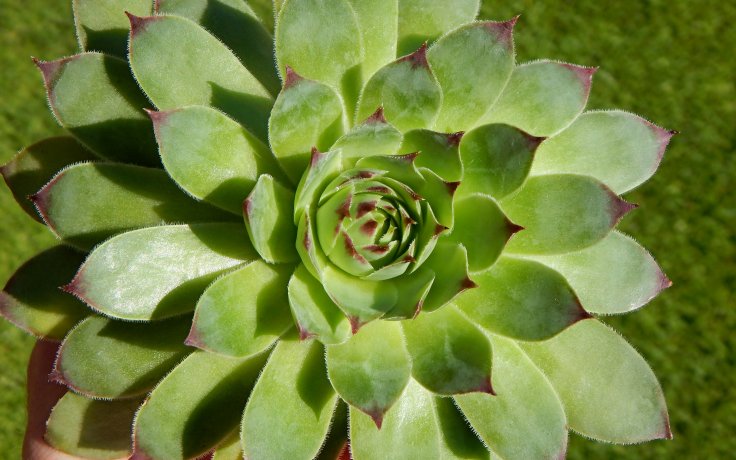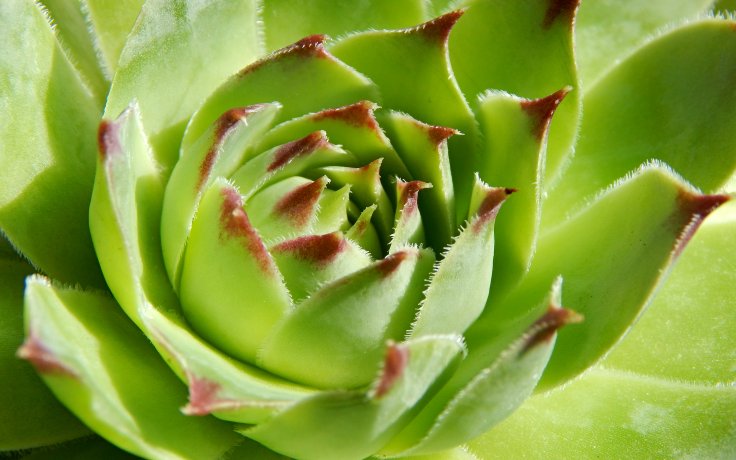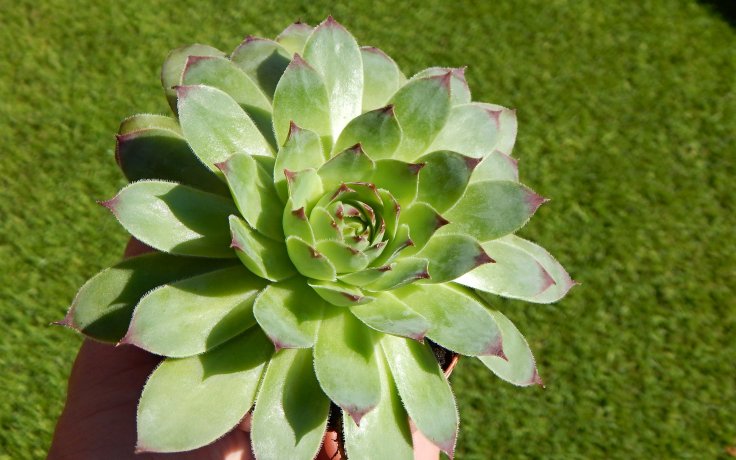- Home
- Cold-Hardy
- Sempervivum
- Sempervivum tectorum





Sempervivum tectorum
Plant likes full sun, can tolerate partial shade. It is suitable for the rock garden or portable containers.
In a pot, water after the substrate has dried out. When placing in a rock garden, water at your own discretion.
The plant is frost hardy, withstanding temperatures down to -37.2 °C.
This probably most typical houseleek has excellent medicinal properties. It can be used to heal burns or fight ulcers.
Sempervivum tectorum is also known as Common Houseleek or Hen and Chickens. It is probably the most typical houseleek among the others. It is native to the European mountains, where it can be found in the Pyrenees in the Apennines and in the Alps.000 The thick fleshy leaves turn shades of green and take on red hues, commonly with a purple tip. The oblong leaves, up to 6 cm long, are lance-shaped and glabrous. They have white cilia on the edges. The rosettes grow to a diameter of about 10 cm and sprout new stems about 5 cm long, on which new rosettes form.
During the summer, stems up to 30 cm long grow on the mother rosette and bear clusters of reddish-purple flowers.
Sempervivum tectorum has been used in traditional medicine for centuries. The plant's sap has medicinal, cooling and anti-inflammatory properties, so it is used in a wide range of treatments. Crushed leaves can be applied to burns and inflammations, and when combined with honey, it easily cures mouth ulcers... The possibilities are many and the individual recipes of our grandmothers vary, but all agree on the great healing properties of this unpretentious typical shake.
The Houseleeks thrive in sunny locations where they can tolerate high temperatures and drought. They prefer well-drained soil, preferably stony or sandy, but are not too demanding. They are an ideal choice for rockeries, dry walls or roofs. Thanks to their shallow roots, they can take hold in a small amount of substrate almost anywhere. Watering should be rather moderate, overwatering could cause root rot. Fertilizing is not necessary, as the sedges can get by with very little nutrients. In general, therefore, almost no care is needed and it will grow happily in almost any drier, bright location.